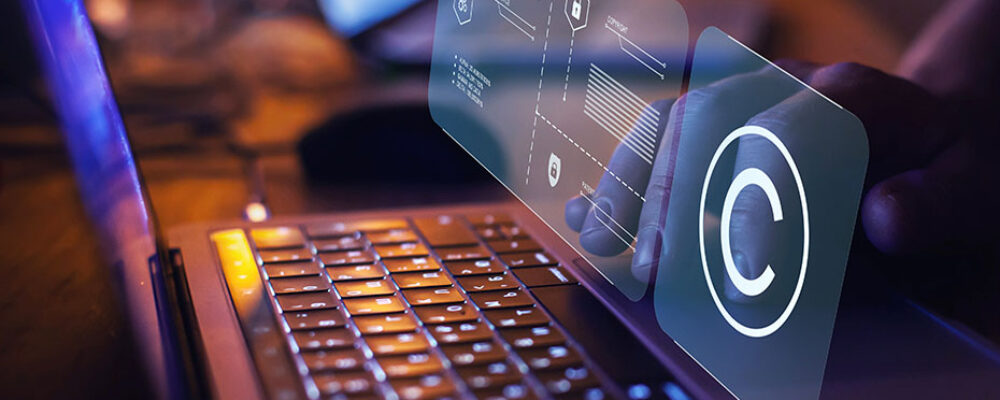Welcome to the latest episode of Gowling WLG’s global Intellectual Property podcast, where we discuss a range of topics to help you protect your brands, creations and inventions.
Kate Swaine: Hello, and welcome to Gowling WLG’s podcast on brand and design clearance. My name is Kate Swaine and I am the co-head of our global IP team. I am going to take you through the brand and design clearance process, the dos and the don’ts, and the issues we typically advise clients to be alert to.
So to start with, what do we mean by brand and design clearance? Well, it captures a wide range of checks that a company or an individual should be carrying out when creating or establishing a new brand and/or designs. Brand clearance can cover anything from checking that the proposed name for a new product is acceptable in light of existing trademarks or company names, through to ensuring that any marketing or advertising relating to a product or service complies with the advertising standards set by regulatory bodies, such as the Advertising Standards Authority in the UK. Similarly, design clearance can cover checking that a proposed design has not already been created, marketed or registered by a competitor through to the need to ensure that the design meets any regulatory requirements for the sector that the design will be functioning in. Those requirements could relate to safety for example.
Ultimately, clearance is key to reducing the risk of a legal claim and ensuring that creations are capable of being distinctive and engendering goodwill. There is no such thing as ‘risk free’ but clearance can help you to make informed and considered decisions as to the best way forward for your business.
So when does clearance happen? Well, it needs to be a part of the creative process from the very beginning. Our advice to clients is to create clearance checks and gateways throughout the process. That means involving and engaging with all relevant persons in the business, in particular your legal team. They can consider any immediate issues but also consider challenges that may become an issue in the future by the time a product or design is taken to market. They can also make that all important risk evaluation – what should you be worried about, why and how much of a risk does it pose to your business?
So for example, someone in your marketing team may come up with a brand name that sounds fantastic on paper but has actually been a registered trademark of a company that consistently enforces its rights, exposing your company to the high risk of not only a trademark infringement claim being brought, but the opposing company succeeding in its claim and securing a costs award in its favour, requiring you to engage in a speedy and costly rebrand. A properly conducted clearance process could have identified that risk and developed ways to reduce the risk or avoid it altogether. It is also important to bear in mind that the creative process will often lead to the creation of content that is capable of protection, provided certain requirements are met. You may want to register trademarks or designs in order to give your business future protection. Those rights can become valuable assets for the business.
So, a design team in a company may create a design that could benefit from, and be commercially exploited through, the design registration process. A registered design can act as a useful deterrent to would-be infringers and put others on notice of your rights. It is really worth taking a look at our Designs for Life guide on our website. The guide sets out the design rights available in the UK and the advantages they can bring to businesses, it is well worth a read.
There are a number of key clearance checks that we always recommend. Brand clearance is essentially a mini infringement analysis, looking at the future and understanding whether third parties are likely to take issue with your proposed brand or product, in light of the rights they hold.
The main check we do with any new brand, campaign or product is checking whether the proposed branding utilises a brand which is identical or similar to a registered trademark of a third party. Subject to where the client is planning to operate, we typically run checks using UK and EU trademark databases. If the brand will be used further afield, we will involve (as needed) our own team in Dubai, China, Canada and Singapore along with IP experts in other countries where necessary. We are looking at whether the proposed name is the same as or similar to an existing mark and, if so, whether it is registered in relation to the same goods or services, which our clients intend to utilise. We also check that the proposed name is not already the name of a company through company registers and we look at general online use to see whether the proposed name or branding encompasses or mimics the product or general product get-up of a third party. It is important to make these wider checks. An ‘all-clear’ check on a trademark database does not necessarily mean a name or form of branding is ok to use. Those databases don’t capture unregistered rights that may form the basis of a passing off claim for example.
The other main brand check that we run is on domain names, these can easily be forgotten. It is important to bear in mind that it is possible for all of the other checks we run to come back clear but for a third party to have already purchased a domain name encompassing the brand that you would ideally like to use. This is particularly relevant for international companies who need to check that multiple domain names across multiple jurisdictions are in fact available. Some jurisdictions, are notorious for ‘trademark squatting’ or ‘domain name squatting’, whereby a third party purchases a domain name or registers a trademark that it will only release to a company in exchange for money. So, securing your domain names early is an important step in the development of a new company name or brand.
When it comes to designs, we always stress the importance of accurately recording the date that designs come into existence. That will act as the basis upon which you assert your own design right and will be reflected in the documents you submit in formally registering your design. The database checks that are done in a brand clearance contexts are similarly necessary during the design clearance process. Both the UKIPO and EUIPO maintain databases that list designs that are registered, and consequently it is important to check these to assess whether there are any registered designs to be concerned about and which may be used to bring a design right infringement claim against you.
It is also important to consider what is already out there in the market. Are there existing third party designs which your design could be regarded as similar to? Are there any competitors in the market who have already created relevant designs? If so, it is worth considering whether they could raise any issues.
Once we have the results of the checks, we need to consider them in light of three key risks. The first is the legal risk – what is the level of risk that your new brand or design may infringe the rights of another and how strong would the claim be against you? Litigation risk – if there is a legal risk, what is the likelihood that another party will threaten or commence litigation? And finally the commercial risk – even if there is little merit in the potential claim, are there commercial factors which increase the risk. What are the commercial risks of proceeding, taking into account the commercial environment a client is operating in and, in particular, the likely appetite of any third parties identified for litigation? For example, do those third party rights belong to a competitor who is likely to take action, if only to be disruptive or is it one that is known for taking a very aggressive approach in relation to third parties?
It is important to review and determine these risks separately but also together. Doing so will determine what the overall level of risk is and it is always worth bearing in mind that one may outweigh the other and elevate or de-escalate the overall risk in proceeding with a particular brand or design development. Ultimately, any brand or design clearance project is about identifying risk and then working out if that risk can be managed in a way that can be ‘lived with’ by the client and that leaves a business comfortable, commercially speaking, about bringing a brand or design development to market.
If I had to sum up our top five tips when it comes to brand and design clearance, I would say:
First, do involve your legal team in the creative process of any brand. Doing so will make the process so much smoother. The same applies to design developments, product developments. You need any risks or issues to be identified sooner rather than later. There is nothing worse than a client having to pull a brand or product because of a legal issue that could have been managed well before they are about to go to market.
Secondly, for the same reason, make any checks as early as you can in the process and, if the development process is lengthy, re-run those checks before launch.
Third, do bear in mind that you do not operate in a vacuum and, just as you are concerned about your intellectual property rights, so are others, and some of them will enforce their rights vigorously. Always make sure that you have done the necessary checks to ensure that your proposed brand or design development will not inadvertently bring an intellectual property infringement claim to your door.
Fourth, if a risk is identified, consider how it can be mitigated. Whilst this will unlikely be the case in high risk cases, for low to medium risk cases, you may be able to reduce that risk further. For example by using a proposed name as a tagline and moving away from it featuring prominently on pack, as well as ensuring an established brand or company name is used as the prominent leading brand. Risk can also be reduced by ensuring there are no similarities in the general ‘get up’ of a new product to those that are already on the market.
Finally, don’t assume that the very fact that you are a big and well-established brand will protect you. If anything, the more established you are, the greater the risk of a third party taking action against you if they believe they have a claim. The belief that your ‘deeper pockets’ give them a better chance of receiving some kind of financial compensation can actually be an incentive to pursue you. Equally, never assume that it is unlikely that you will ruffle any feathers because you are a relatively small outfit: the more a third company has invested in its brand, the more it is likely to take issue with any perceived infringements of its intellectual property rights.
I hope that you have found this podcast useful. If you have any queries on the topic of brand and design clearance or require any assistance to carry out the checks we have mentioned today, please do contact either myself or a member of our team here at Gowling WLG – we would be delighted to assist you further.
Thanks for joining Gowling WLG for this podcast, if you enjoyed this episode, be sure to check out our website at gowlingwlg.com for more useful insights and resources and don’t forget to subscribe to ensure you join us for our next episode.
Gowling WLG is a multinational law firm formed by the combination of Canada-based Gowlings and UK-based Wragge Lawrence Graham & Co in February 2016, in the first multinational law firm combination co-led by a Canadian firm.
Please visit the firm link to site






